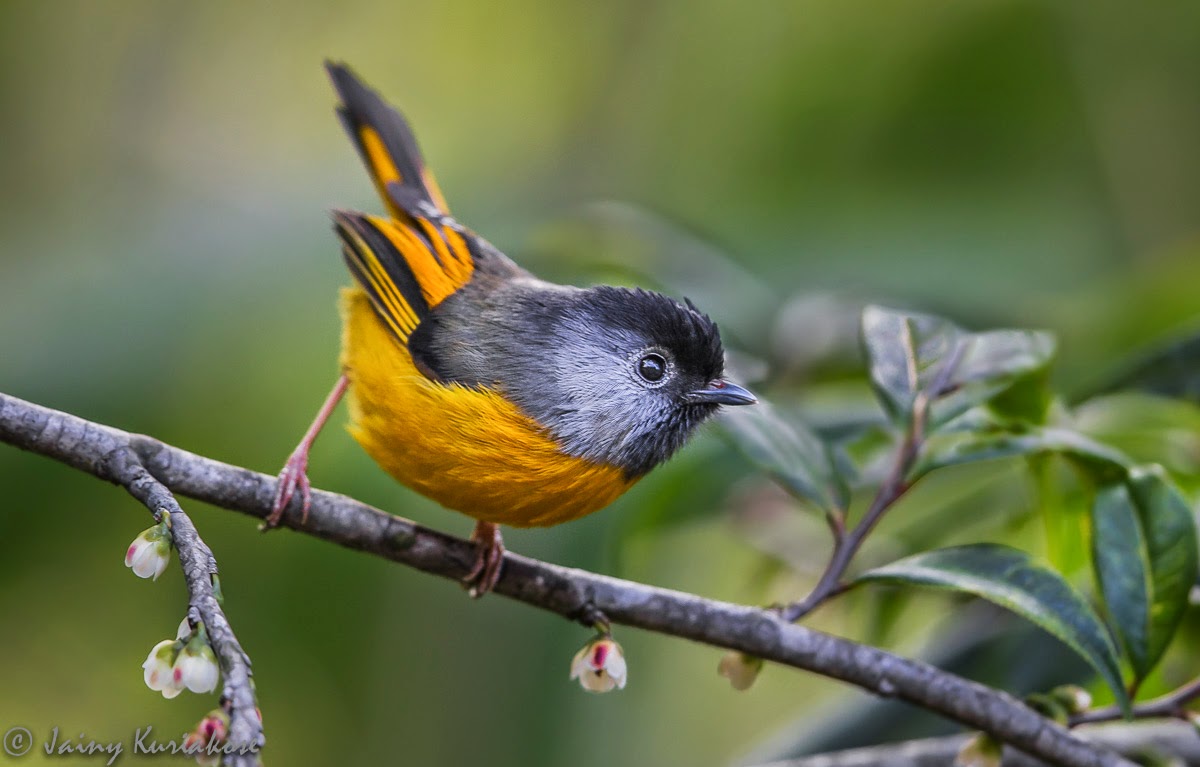
Alcippe chrysotis
SUBFAMILY
Timaliinae
TAXONOMY
Proparus chrysotis Blyth, 1845, Nepal. Five subspecies.
OTHER COMMON NAMES
English: Golden-breasted tit babbler; French: Alcippe а
poitrine dorйe; German: Gold-Alcippe.
PHYSICAL CHARACTERISTICS
4.3 in (11 cm).The most brilliantly colored member of a large
genus of mostly brown birds. Chest orange or yellow; head
black, with gray throat and whitish cheeks and crown. Wings
black with brilliant orange and yellow highlights. Tail black,
edged with orange or yellow. Mantle grayish and rump yellow.
Sexes similar. Shape typical of genus: rounded, like a titmouse
or kinglet, with a short, sharp bill, and tail of moderate length.
DISTRIBUTION
Himalayas, east from Nepal, Assam, northeastern Myanmar,
southwestern China, and northwestern Vietnam.
HABITAT
Highland evergreen forest and scrub.
BEHAVIOR
Member of perpetually moving “bird waves,” mixed-species
flocks sweeping from one feeding site to another, continuously
vocalizing.
FEEDING ECOLOGY AND DIET
Typical mixed-species flock foliage gleaner, moving from plant
to plant on a perpetual search for insects and spiders on bark,
twigs, and under leaves. May also eat seeds and fruit.
REPRODUCTIVE BIOLOGY
Not known.
CONSERVATION STATUS
Not threatened, though parts of range subject to deforestation.
SIGNIFICANCE TO HUMANS
A popular target for ecotourists, many of whom come to the
Himalayas to momentarily spot as many participants in “bird
waves” as possible.
Other popular Animals
Photo Gallery of - Golden-breasted fulvetta




 Animalia Life
Animalia Life